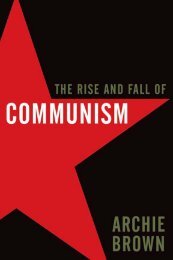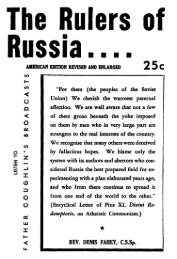education-dev-global-era-69
education-dev-global-era-69
education-dev-global-era-69
You also want an ePaper? Increase the reach of your titles
YUMPU automatically turns print PDFs into web optimized ePapers that Google loves.
Chapter 2: China’s Uneven Development:Nationalism and Inequality on the Mainland – Edward Vickerswith Britain’s ‘Open University’ model, noted that in China from the mid-1980s the statesought to restrict enrolment in ‘Radio and Television Universities’ through imposing academicentrance requirements and steering applicants towards courses, such as Engineering, that wereseen as serving the needs of economic construction (Jiang, 2005).The role played by private universities in the expansion of China’s higher <strong>education</strong> systemfurther illustrates the narrowly statist and instrumentalist agenda informing policy. Statefunding is lavished on leading public universities, particularly those specialising in appliedtechnological research, with such institutions favoured in schemes such as the ‘211 Project’ thataim to build up ‘world-class universities’ in China. Meanwhile, private universities are officiallyseen as suppliers of the lower-status vocational courses that their prestigious public counterpartsdecline to offer, providing such courses at no cost to the government. The government(encouraged by leaders of public universities) has been striving to confine private institutionsto this role, in 2004 depriving them of any opportunity to be upgraded to four-yeardegree-awarding comprehensive universities, thus denying them the right to compete acrossthe board with their public rivals. Ruth Hayhoe (speaking at the 2006 conference of theComparative and International Education Society) suggested comparisons with policies onprivate higher <strong>education</strong> pursued in the East Asian ‘tigers’, where higher <strong>education</strong> wassimilarly expanded on the basis of increased private provision, but where more effectivemeasures were taken to promote equitable access (partly through steps to ensure greater equityin schooling outcomes). In Chinese higher <strong>education</strong>, despite the sweeping restructuring thathas occurred in recent years, ‘public good’ as defined by the CCP usually trumps privateaspiration. Nevertheless, as in the tigers, the extension of private higher <strong>education</strong> has allowedrapidly increasing access to some form of higher <strong>education</strong> at a cost affordable to the state.4.5 Social stability, equality and <strong>education</strong>The tension in <strong>education</strong> between private aspiration and state-defined ‘public good’ representsjust one of many challenges to the stability of Chinese society and the legitimacy of theCommunist regime. Economic lib<strong>era</strong>lisation and the freeing up of the labour market havestripped the state of many of the instruments of social control that it deployed up to the 1980s.Greater media freedom has meant greater scope for the expression of sometimes extreme Hanchauvinism, challenging the state to live up to its own nationalist rhetoric, but at the same timesevere tensions persist between the Han majority and ‘minority nationalities’ in Tibet, Xinjiangand elsewhere (see section 2.2 above). However, it is perhaps the growing socio-economicinequalities between coast and hinterland, urban and rural areas, East and West that constitutethe most serious threats to social harmony – with outrage at official corruption or arroganceoften providing the spark for outbursts of unrest.One way in which the state has attempted to counter the potential threat to social stability andCCP legitimacy is through the promotion of a discourse of suzhi or ‘population quality’(Murphy, 2004; Jones, 2005). Murphy (ibid.: 2) notes how an all-embracing, amorphousconcept of suzhi as ‘essentialised quality’ emerged in China only as recently as the early 1980s,referring to ‘the innate and nurtured physical, intellectual and ideological characteristics of aperson’ (ibid.: 2), though other research (such as that by Dikotter) suggests that the origins ofDFID 75





